第54章
Lobo Raman is a central point of the east end of Sumatra, being about a hundred and twenty miles from the sea to the east, north, and west. The surface is undulating, with no mountains or even hills, and there is no rock, the soil being generally a red pliable clay. Numbers of small streams and rivers intersect the country, and it is pretty equally divided between open clearings and patches of forest, both virgin and second growth, with abundance of fruit trees; and there is no lack of paths to get about in any direction. Altogether it is the very country that would promise most for a naturalist, and I feel sure that at a more favourable time of year it would prove exceedingly rich; but it was now the rainy season, when, in the very best of localities, insects are always scarce, and there being no fruit on the trees, there was also a scarcity of birds. During a month's collecting, I added only three or four new species to my list of birds, although I obtained very fine specimens of many which were rare and interesting. In butterflies I was rather more successful, obtaining several fine species quite new to me, and a considerable number of very rare and beautiful insects. I will give here some account of two species of butterflies, which, though very common in collections, present us with peculiarities of the highest interest.
The first is the handsome Papilio memnon, a splendid butterfly of a deep black colour, dotted over with lines and groups of scales of a clear ashy blue. Its wings are five inches in expanse, and the hind wings are rounded, with scalloped edges. This applies to the males; but the females are very different, and vary so much that they were once supposed to form several distinct species.
They may be divided into two groups--those which resemble the male in shape, and, those which differ entirely from him in the outline of the wings. The first vary much in colour, being often nearly white with dusky yellow and red markings, but such differences often occur in butterflies. The second group are much more extraordinary, and would never be supposed to be the same insect, since the hind wings are lengthened out into large spoon-shaped tails, no rudiment of which is ever to be perceived in the males or in the ordinary form of females. These tailed females are never of the dark and blue-glossed tints which prevail in the male and often occur in the females of the same form, but are invariably ornamented with stripes and patches of white or buff, occupying the larger part of the surface of the hind wings. This peculiarity of colouring led me to discover that this extraordinary female closely resembles (when flying) another butterfly of the same genus but of a different group (Papilio co?n), and that we have here a case of mimicry similar to those so well illustrated and explained by Mr. Bates.[ Trans. Linn.
Soc. vol. xviii. p. 495; "Naturalist on the Amazons," vol. i. p.
290.]
That the resemblance is not accidental is sufficiently proved by the fact, that in the North of India, where Papilio co?n is replaced by all allied forms, (Papilio Doubledayi) having red spots in place of yellow, a closely-allied species or variety of Papilio memnon (P. androgens) has the tailed female also red spotted. The use and reason of this resemblance appears to be that the butterflies imitated belong to a section of the genus Papilio which from some cause or other are not attacked by birds, and by so closely resembling these in form and colour the female of Memnon and its ally, also escape persecution. Two other species of this same section (Papilio antiphus and Papilio polyphontes) are so closely imitated by two female forms of Papilio tbeseus (which comes in the same section with Memnon), that they completely deceived the Dutch entomologist De Haan, and he accordingly classed them as the same species!
But the most curious fact connected with these distinct forms is that they are both the offspring of either form. A single brood of larva were bred in Java by a Dutch entomologist, and produced males as well as tailed and tailless females, and there is every reason to believe that this is always the case, and that forms intermediate in character never occur. To illustrate these phenomena, let us suppose a roaming Englishman in some remote island to have two wives--one a black-haired/ red-skinned Indian, the other a woolly-headed/ sooty-skinned negress; and that instead of the children being mulattoes of brown or dusky tints, mingling the characteristics of each parent in varying degrees, all the boys should be as fair-skinned and blue-eyed as their father, while the girls should altogether resemble their mothers. This would be thought strange enough, but the case of these butterflies is yet more extraordinary, for each mother is capable not only of producing male offspring like the father, and female like herself, but also other females like her fellow wife, and altogether differing from herself!